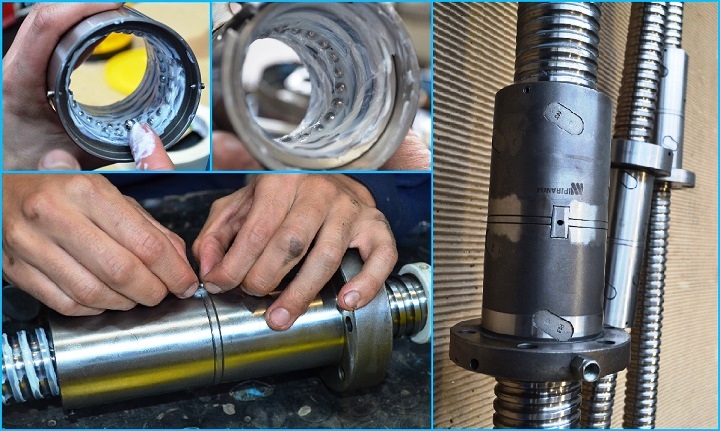What is a ball screw and why is the most common type used in CNC milling machines?
The spindle is a mechanism designed to transmit motion to certain parts of the milling machine or other heavy industrial machines through a worm screw that converts rotary motion into linear motion.

Ball screw in CNC milling machines and heavy industrial machinery
There are two types of spindles: lead screws and ball screws. The lead screw has a much simpler design, comprising a screw and a nut, so that the rotary motion of the screw is converted into the linear motion of the nut. Due to the continuous sliding contact between the screw threads and the nut, the friction created results in greater wear and losses.
On the other hand, the ball screw is the type that is most used in industrial and precision machinery. Here, there is no friction between the nut and screw since the travel is on steel ball bearings, so that the screw is in contact with the balls and the balls with the nut, to give a smooth, accurate movement and good rigidity.
How does a ball screw work?
Ball screws consist of:
- A Spindle shaft, which is a worm screw that provides a helical raceway for the ball bearings.
- A Spindle nut that travels longitudinally along the shaft.
- Steel ball bearings that roll between the nut and the screw in order to reduce the friction and increase the speed of travel of the nut.
- Circulation system of the ball bearings.
The selection of the type of motion transmission is a fundamental part of the design of a numerical control milling machine. For this reason, most of the second-hand CNC milling machines retrofitted at NC Service Milling Machines feature a ball screw transmission system for greater precision and ease of travel and positioning, as well as greater efficiency and performance and with less motor torque required.
In our repair process for second-hand milling machine and industrial machinery, as well as in our machinery maintenance processes, we preload the screw and replace the ball bearings, among other tasks. This will extend the useful life of the spindles on the milling machine, by returning them to optimal condition. However, if the spindles are damaged or should the customer so require, then these are replaced with new ones.
